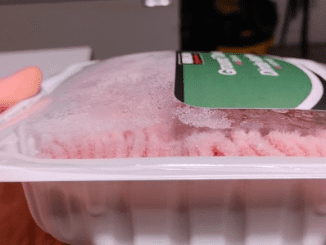Let’s face it—vaping was marketed as the “safe” alternative to smoking. Sleek devices, candy-flavored clouds, and the absence of cigarette smoke made it seem like a harmless trend. But behind the bubblegum and mango haze hides a terrifying reality: vaping can lead to a life-altering condition called popcorn lung. And now, doctors are raising red flags as more teens end up in emergency rooms with symptoms they don’t understand—and can’t reverse.
What Is Popcorn Lung and Why Is It So Dangerous?

The name sounds quirky, but popcorn lung is anything but fun. Officially known as bronchiolitis obliterans, it’s a rare but severe lung disease. It damages the smallest airways in your lungs, causing inflammation and scarring that makes breathing harder and harder over time. There’s no known cure—only symptom management.
The disease earned its nickname after a group of microwave popcorn factory workers developed it in the early 2000s. The culprit? A chemical called diacetyl, used to give popcorn its buttery flavor. Fast forward to today, and diacetyl hasn’t disappeared—it’s still found in many flavored e-liquids used in vaping devices.
How Vaping Can Trigger Popcorn Lung
Here’s the scary part: inhaling diacetyl is far more dangerous than eating it. When heated and turned into vapor, diacetyl becomes highly toxic to lung tissue. It’s not just diacetyl either. Vape liquids can contain over 180 flavoring chemicals, many of which have never been tested for inhalation safety.
Combine that with acetaldehyde, formaldehyde, and other harmful substances found in e-liquids, and you’ve got a chemical cocktail that goes straight into your lungs. Your body isn’t equipped to handle that kind of assault—especially not every day, multiple times a day.
Video : Doctors Say Vaping May Be Causing ‘Popcorn Lung’
The Symptoms of Popcorn Lung: What to Watch For
One of the biggest dangers of popcorn lung is how quietly it starts. The symptoms mimic everyday conditions like asthma or a mild respiratory infection, so they’re often ignored or misdiagnosed at first.
Watch out for these red flags:
- Persistent, dry cough
- Wheezing that doesn’t go away
- Shortness of breath, especially during physical activity
- Tightness in the chest
- Fatigue without a clear cause
These symptoms might seem harmless at first, but they can worsen over time, especially if vaping continues. In teens, early signs are often dismissed until they land in the emergency room struggling to breathe.
Why Teens Are at Higher Risk
Let’s be real—flavored vapes are designed to hook young people. With names like “Blue Razz Ice” and “Strawberry Watermelon,” it’s no wonder vaping has exploded among teenagers. According to health surveys, flavors are the number one reason teens start vaping. But while the flavors are fun, the damage is real—and lasting.

When teens vape, the chemicals bypass the mouth and digestive system entirely. Instead, they go directly into the lungs and bloodstream, reaching vital organs within seconds. That’s a direct hit to developing lungs and brains—and it’s far more dangerous than most teens realize.
No Cure, Only Management: How Popcorn Lung Is Treated
Here’s the harsh truth: once the damage is done, it can’t be undone. There’s no medication that can reverse the scarring in the lungs caused by popcorn lung. Doctors can only manage symptoms and try to prevent the condition from getting worse.
Common treatments include:
- Bronchodilators and inhalers to open the airways
- Corticosteroids to reduce inflammation
- Oxygen therapy for those with reduced lung capacity
- Lung transplant in severe, advanced cases
Early diagnosis helps, but it only goes so far. The most effective “treatment” is prevention—not starting or quitting vaping altogether.
How to Protect Yourself and Loved Ones
If you’re a teen or a parent, now is the time to act. Talk openly about the risks. Vaping may seem safer than smoking, but the long-term damage is proving to be just as terrifying—if not worse.
Here are a few simple steps to reduce the risk:
- Avoid all vaping products, especially flavored ones
- Stay away from secondhand vapor in closed spaces
- Read labels and look for diacetyl-free products (though many aren’t honest about ingredients)
- Seek help to quit vaping if it’s already a habit
There are dozens of support resources, from online programs to in-school counselors, that specialize in helping young people quit vaping.
Video : Is Vaping Safe? | A Doctor Talks e-Cigarettes & Lung Disease
The Emotional Toll: Support Matters
Living with popcorn lung isn’t just a physical challenge—it’s emotional, too. Teenagers diagnosed with chronic lung conditions often feel isolated, anxious, and even angry. That’s why emotional support is just as important as medical care.
Whether it’s through peer support groups, mental health counseling, or simply having open conversations at home, emotional wellness should be part of the healing process. For families, understanding and compassion can make a huge difference in how teens cope with their diagnosis.
Conclusion: Don’t Let the Flavors Fool You—Vaping Can Be a One-Way Road to Chronic Illness
Popcorn lung may sound like a made-up condition, but its consequences are painfully real. Vaping isn’t the harmless habit it’s made out to be—it’s a direct threat to lung health, especially in teens whose bodies are still developing.
From the hidden chemicals in flavored e-liquids to the irreversible damage caused by inhaling them, this trend has turned into a public health emergency. Doctors are seeing more and more cases of young people with lungs that look decades older than they are. And many of them had no idea what they were risking.
It’s time to ditch the vape and protect your lungs before the damage is done. Because once those tiny airways are scarred, there’s no turning back. Let’s make sure more teens stay out of ERs—and keep their futures clear, strong, and smoke-free.


